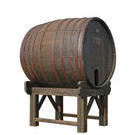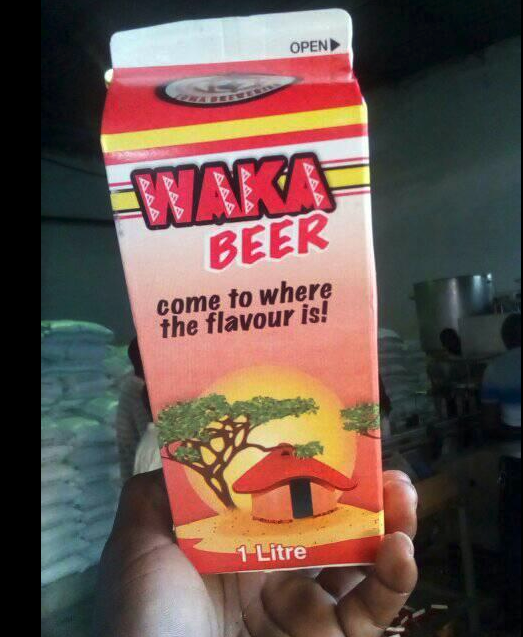-
Posts
18 -
Joined
-
Last visited
Profile Information
-
Location
Toronto, Canada
Recent Profile Visitors
The recent visitors block is disabled and is not being shown to other users.
-
It makes perfect sense. Yeast doesn't exist for fermentation. Yeast is a group of organisms. The wine world simply cannot rename parts of microbiology because it's convenient to wine. But then again, it's completely expected from the wine community. Edited: Maybe it's still unclear. Fungi behave the way they do well before any fermentation for ethanol for humans. Terminology goes way beyond any food application, beer, wine, cheese, distilled spirits.
-
How much beer do you have in your wine program? Second, yeast is microbiology, not a food person's tool. Fermentation done this way was natural well before people started making wine. I guess nobody's up for a proper discussion, other than negation. I was hoping this forum would have people that don't get ticked at reality.
-
Says who? You DO realize Belgian Ales have all sorts of ingredients in them, right?
-
Availability doesn't mean it should happen. And I'm fully aware that it's available. I ran a yeast lab decades ago.
-
The point of wine is to not use added strains. And every other "controllable" aspect you mentioned, is also done in the agricultural side of malted and non-malted cereals that go into beer and whiskey. Brewhouse applications far outreach those available to vintners. Wine doesn't have coriander in it. Nor any hops. With a name like Duvel, I'm sure you're aware of how diverse beer gets. For Belgian Ales, Duvel is a household name, comparatively. My point is that Spanish wine and Venetian wine, are both wines, regardless of flavour compounds and subjective tasting. Objective complexity from a biochemistry lab POV shows how many compounds measured well beyond what a palate can measure. Coffee reigns supreme.
-
I don't think it was about eating. It was about making bread. We all know the legacy about bread. As well, they knew plants grew. They ate them, took dried seeds and made bread. A rain, plus separation of grain from water, is all it takes. The beginning of germination, then removal of the solids (the part this ancient baker would want) is where the attention would be paid. Meanwhile, the liquid the grain was in, is now fermenting well. It made no sense as he probably thought it was just water. That rainwater, in today's terms is called brewing liquor. He obviously tasted it and it was pleasant enough that he had more than a taste. Probably the biggest future-changing experiment in human history. Because they were nomads, they could find grain elsewhere. So Phil the Baker, as we'll call him, would try exactly what happened to him at this first location (let's call it the Magical Bakery). Nothing happened and it confused him. Nomading and nomading, he eventually came across the same Magical Bakery location. He tried it and it happened. This location is important as it is in a low-lying location that has an RH high enough that wild yeast strains propagate, as airborne yeasts and those that cling to the grain he was using. This is very much along how wild strains cling to grapes. So fermentation is now tied to the location where he is at. River valleys. Namely, at the time, the meeting of the Tigris & Euphrates rivers, labelled as Mesopotamia. This location is still called the Bread Basket. As for whiskey, that mash is much closer to the Mesopotamia version, then distilled. In fact, I might imagine this is how Phil first discovered this stuff.
-
Sources: The brewing industry. I've been brewing professionally since 1991, and brewing personally longer than that. You need to read up on how to make beer. Wine is crushed grapes and ferment. Brewing has choice of ingredients, blended manufactured ingredients that grapes couldn't come close to, spices such as hops, fruit, and spices, choice of added yeast strains as wort arrives inoculated, and different final forms such as cask ale, unfiltered bottled, canned, or kegged form. There are beers out there that you wouldn't recognize as beer. There are ingredients out there that you wouldn't know as being mash-tun extenders. Wine is wine. That process is hugely simple compared to beer. The microbiology alone for beer is that diverse and people continue to study its history. I did a mycological study on fermentation science nomenclature. Canadian wine experts hang with me and I inform them about microbiology and how wild strains propagate and how seasonality, weather, and agriculture affects flavours. Believe me, I've read way more than you have. Way more. There is no such thing as "ambient yeasts". They are wild strains. And I know which ones do what to wine. And you don't make wine, only to find out what it does to you. You know this before you make it. Beer was the mistake that was made that changed nomads to farmers, due to the localized "magic" that was only available in river valleys. That magic is also wild strains at the Tigris and Euphrates, namely Mesopotamia. Those nomads were using grain for unleavened bread, but tripped over micro when it rained. But that's not what the complex was referring to. Complexity comes from raw ingredients and processes in manufacturing. The diversity of beers around the world makes wine look very restricted. As for mead, I can say this: Micro needs a certain concentration of carbohydrates in order to function. Honey can be considered a processed food, by bees. That concentration of carbs is too high to be assimilated. That's why it doesn't go bad. Diluted to a lesser concentration, and wild strains take advantage. I've read nothing about diluted honey solution turning into mead. I've made mead before, and it's quite interesting. Most of it is flavoured because true mead is pretty much flavourless. Knocks you on your ass though. Here's a pic of some traditional Zambian white beer. Hilarious stuff. No wine comes close to this kind of divergence.
-
So how has this played out? I've been a master brewer since 1991. This program wasn't around then and I know a handful of the original judges. Pre-Internet. Eff, I'm old.
-
Guinness introduced a widget which is basically a rigid hollow sphere with a small pinprick of a hole in it. It's inserted into a can of Guinness (or whatever product), which is nitrogenated. That means, nitrogen is put into solution with some carbon dioxide for a slight carbonation and head retention. The goal is to achieve a tight foam for a head. Caffreys has the same nitrogenation, but a different style.
-
Beer is MUCH more complex than wine. Both in process, and the range of products. It's not about appreciation, it's about complexity. Coffee compounds are counted around 20k, beer about half that, IIRC. Wine people don't like these facts. Beer is also older and has a much larger history.
-
International Centre for Brewing & Distilling is the top school. Top breweries from around the world go there. Malting, Brewing & Distilling.
-
Did you get the size of the brewhouse? (brew-length)
-
Sorry for the delay. I couldn't reply as my new account has some restrictions. My food company is being worked on at the moment. Hopefully I can elaborate on it when the time comes. Tech has me pinned down at the moment, and it's long hours. It's about marketing food. I've been an industrial microbiologist since 1991 as a master brewer. Travelled the world consulting and owning my own brewery here in Ontario. When we started our brewery, there was 12 such breweries in Ontario. Now there's 12 in my neighbourhood. Cask Days are at the Brickworks this weekend. Anyway, I'm not trying to break the rules of the forum, yet I want to introduce my company, as it will be a useful service to those that ... eat food. Heh. And those that work in the food biz. Cheers
-
Toronto, downtown East.
-
Hector Litre changed their profile photo
-
Hi there. I'm a Canadian that comes from the brewing world. I'm a microbiologist biochemist technology guy that's starting a food company. More to come.






